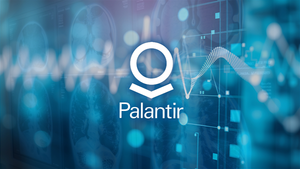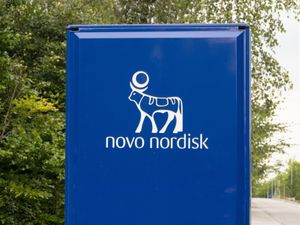
In a dramatic turn of events that sent shockwaves through the biotechnology sector, Omeros Corporation (NASDAQ: OMER) witnessed its stock catapult by an astounding nearly 150% after announcing a colossal licensing agreement with pharmaceutical titan Novo Nordisk (CPH: NOVO B). The deal, potentially valued at up to $2.1 billion, grants Novo Nordisk exclusive global rights to Omeros's experimental treatment, zaltenibart (formerly OMS906), a drug targeting the complement system. This massive influx of capital and validation from a major player marks a pivotal moment for the small biotech, offering a lifeline and a clear path forward for its promising therapeutic.
The agreement underscores a significant strategic move for both companies: for Omeros, it provides substantial financial backing and external validation for its innovative pipeline, while for Novo Nordisk, it represents a bold expansion into rare disease treatments with a highly anticipated asset. The market's immediate reaction—a near doubling of Omeros's share price—reflects the immense potential perceived in zaltenibart and the transformative impact this partnership is expected to have on Omeros's financial stability and future development trajectory.
A Deep Dive into the Landmark Agreement
The core of this groundbreaking agreement revolves around zaltenibart, a clinical-stage human monoclonal antibody designed to inhibit MASP-3, a protein crucial for activating the alternative pathway of the immune system's complement cascade. Dysregulation of this pathway is implicated in a range of rare and debilitating diseases. Omeros had previously garnered positive Phase 2 data for zaltenibart in paroxysmal nocturnal hemoglobinuria (PNH), a rare acquired blood disorder characterized by the immune system attacking red blood cells. The drug demonstrated encouraging results in improving hemoglobin levels, absolute reticulocyte counts, and preventing both intravascular and extravascular hemolysis in PNH patients.
The journey for zaltenibart has seen its share of twists. Omeros had, at one point, temporarily paused the program due to resource prioritization, making Novo Nordisk's entry a significant revitalization for the drug's development. Novo Nordisk's commitment extends beyond PNH, with plans to initiate a global Phase 3 study for zaltenibart in PNH and to explore its potential in other rare blood and kidney disorders, where it could offer substantial advantages over existing therapies. This broader scope highlights Novo Nordisk's confidence in the drug's mechanism and its versatility across multiple indications.
Financially, the deal is structured to provide Omeros with an upfront payment of $340 million, which includes certain near-term milestone payments. Beyond this initial sum, Omeros stands to receive potential development and commercial milestone payments that could accumulate to the total value of up to $2.1 billion. Furthermore, the agreement includes tiered royalties on net sales of zaltenibart should it successfully reach commercialization. Novo Nordisk gains exclusive global rights for development and commercialization across all indications, while Omeros retains certain rights to its preclinical MASP-3 programs unrelated to zaltenibart, including the development of small-molecule MASP-3 inhibitors with limited indication restrictions. The transaction is currently subject to regulatory approvals and is anticipated to close in the fourth quarter of 2025. The immediate market reaction saw Omeros's shares (NASDAQ: OMER) surge between 136% and 148.54% in premarket and early trading, signaling strong investor approval and renewed optimism for the company's prospects.
The Winners and Losers in a Reshaped Market
The most immediate and obvious beneficiary of this landmark deal is Omeros Corporation (NASDAQ: OMER). The upfront payment of $340 million provides a much-needed capital injection, significantly bolstering its balance sheet and offering financial stability that was previously a concern given the pause in the zaltenibart program. This capital allows Omeros to focus on its other lead project, narsoplimab, and potentially other early-stage pipeline assets, without the immediate pressure of funding zaltenibart's expensive late-stage development. The deal also serves as a powerful validation of Omeros's research capabilities and its innovative approach to drug discovery, potentially attracting further partnerships or investor interest in its remaining pipeline.
Novo Nordisk (CPH: NOVO B) also emerges as a significant winner. Known primarily for its leadership in diabetes and obesity care, this acquisition marks a strategic expansion into the lucrative and often underserved rare disease market. Zaltenibart's potential in PNH and other rare blood and kidney disorders diversifies Novo Nordisk's therapeutic portfolio and leverages its extensive global development and commercialization infrastructure. While the upfront and potential milestone payments are substantial, the long-term revenue potential from a successful rare disease drug with significant unmet needs could be immense, solidifying Novo Nordisk's position as a broader pharmaceutical powerhouse.
Conversely, companies developing competing treatments for PNH or other complement-mediated diseases could face increased competition. Existing players in the PNH market, such as Alexion Pharmaceuticals (NASDAQ: ALXN), a subsidiary of AstraZeneca (LON: AZN), with its blockbuster drugs Soliris and Ultomiris, might see a new formidable competitor on the horizon. While zaltenibart's unique mechanism of action and potential advantages could differentiate it, the entry of a well-resourced giant like Novo Nordisk into the space will undoubtedly intensify the competitive landscape. Smaller biotechs with early-stage complement inhibitor programs might also find it harder to attract investment or partnership interest, as attention shifts towards the validated zaltenibart program.
Broader Implications for the Biotech Industry
This substantial licensing deal between Omeros and Novo Nordisk is more than just a transaction; it's a potent signal reverberating across the broader biotechnology and pharmaceutical industries. It underscores a persistent and accelerating trend: large pharmaceutical companies are increasingly looking to smaller, innovative biotechs to replenish and diversify their pipelines, particularly in specialized and high-value areas like rare diseases. With internal R&D often costly and high-risk, licensing agreements and acquisitions of clinical-stage assets offer a more efficient pathway to market for established players.
The deal's ripple effects are likely to be felt by competitors and partners alike. For companies with similar platform technologies or drugs targeting the complement system, this agreement sets a new benchmark for valuation and partnership terms. It could ignite a fresh wave of M&A activity or licensing discussions as other large pharma companies seek to emulate Novo Nordisk's strategic move into rare disease spaces. Furthermore, it highlights the importance of strong Phase 2 data in attracting significant investment, as zaltenibart's promising results were clearly a key driver for Novo Nordisk's interest.
From a regulatory perspective, this deal is unlikely to face significant hurdles, given that it involves a licensing agreement for an experimental drug rather than a full corporate merger that might raise antitrust concerns. However, the successful progression of zaltenibart through Phase 3 and subsequent regulatory approval will be closely watched, as it could influence future regulatory pathways for complement-inhibiting therapies. Historically, similar large-scale licensing deals for promising rare disease assets have often led to accelerated development and a quicker path to patients, driven by the resources and expertise of the larger pharmaceutical partner. This aligns with a broader industry and regulatory push to bring innovative treatments for unmet medical needs to market more efficiently.
The Road Ahead: What Comes Next
Looking ahead, the immediate focus will be on the closing of the transaction, which is anticipated in the fourth quarter of 2025, pending regulatory approvals. Once complete, Novo Nordisk (CPH: NOVO B) will swiftly move to initiate the global Phase 3 study for zaltenibart in PNH. The success of this pivotal trial will be the most critical short-term determinant of the drug's future and the ultimate realization of the deal's potential value. Investors and industry observers will be closely monitoring trial progress, data readouts, and any further updates on its development in other rare blood and kidney disorders.
For Omeros Corporation (NASDAQ: OMER), the deal offers significant strategic flexibility. With substantial capital in hand, the company can now aggressively pursue the development of narsoplimab, its other lead asset, and potentially accelerate other preclinical programs. This could involve new clinical trials, expanded indications, or even further strategic partnerships. The market will be watching for how Omeros deploys its newfound financial strength and whether it can replicate the success of the zaltenibart deal with its remaining pipeline.
In the long term, if zaltenibart successfully navigates clinical trials and gains regulatory approval, it could emerge as a significant new treatment option in the rare disease landscape. This would not only generate substantial revenue for Novo Nordisk but also provide Omeros with ongoing royalty streams. The market opportunities for innovative rare disease therapies remain vast, driven by high unmet needs and premium pricing. However, challenges such as competition from existing therapies, the complexities of rare disease patient recruitment for trials, and the high bar for demonstrating superior efficacy or safety will need to be navigated. Potential scenarios range from zaltenibart becoming a blockbuster drug, significantly impacting the PNH market and beyond, to encountering unforeseen clinical or commercial hurdles that temper its initial promise.
A New Chapter for Omeros and the Biotech Market
The $2.1 billion licensing deal between Omeros and Novo Nordisk represents a watershed moment for Omeros Corporation, transforming its financial outlook and validating its scientific innovation. The almost 150% surge in Omeros's stock is a clear indicator of the market's enthusiastic reception, signaling renewed confidence in the company's future. For Novo Nordisk, it marks a strategic and ambitious entry into the rare disease sector, diversifying its portfolio and leveraging its formidable resources to bring a promising therapy to patients.
Moving forward, the biotech market will be closely watching the progression of zaltenibart through Phase 3 trials and beyond. This deal underscores a broader industry trend of major pharmaceutical companies seeking external innovation to fuel growth, particularly in specialized therapeutic areas. It sets a precedent for the valuation of early-stage assets with compelling clinical data and highlights the strategic importance of rare disease pipelines. Investors should monitor the clinical development timeline for zaltenibart, Omeros's strategic deployment of its new capital, and the competitive landscape in complement-mediated disorders. The lasting impact of this event could be a significant re-rating of Omeros and a further acceleration of M&A and licensing activity in the innovative biotech space.
This content is intended for informational purposes only and is not financial advice






